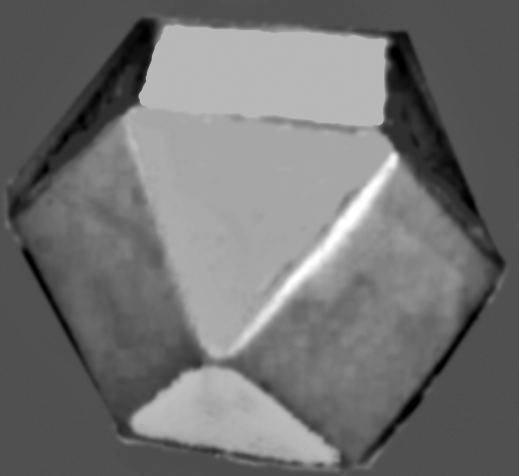top of page
James Otto Mourek
Home, Jim's Theories, Stories, Photos, Cartoons/Videos/Music & Gorillas+Zoo 2
Holy Thursday Theory
In the second edition of the 1961 book titled "Mathematical Models" by Cundy and Rollett, Oxford University Press, there is example shown as to how it is possible to divide a flat one-dimensional square into five areas and than recombine them into an octagon.
The one-dimensional square was the same area as the octagon.
Thinking that as curious, I endeavored :
Taking a single plane one-dimensional square and dividing it up so as to create four equal lateral triangles at the squares corners; with the central square area twice the area of any two of the four equal lateral triangles ; a result having more beauty and proportion.
Followed by:
Four similarly folded one-dimensional squares, if folded together so as to have the corner triangles overlapping corresponding triangles of one of the four adjoining one-dimensional squares; creates a cuboctahedron.
Here is where Jim's 'Holy Thursday Theory' comes in:
Have we not created a three-dimensional model depicting a fourth-dimensional representation of a one-dimensional square.
Curiously, it is possible to create THREE four-sided boxes by unfolding the constructed cubocatahedon equal to the same area as the central square in any one of the four planes of view of those boxes, which are all equal in area; and, on a four-to-one ratio.
The central area of the cuboctahedron being represented as the created model's void.
The constructed THREE four-sided boxes in turn having TWELVE sides; in a four to one ratio.
It should be possible to fashion more complex models depicting fourth-dimensional representations of other one-dimensional planes of view, using those same ratios as in our modeled fourth-dimensional square as a sort of "mathematical Rosetta Stone"; with the right-angle and square being the fundamental basis of all design.
Thinking, Outside the BOX.


bottom of page